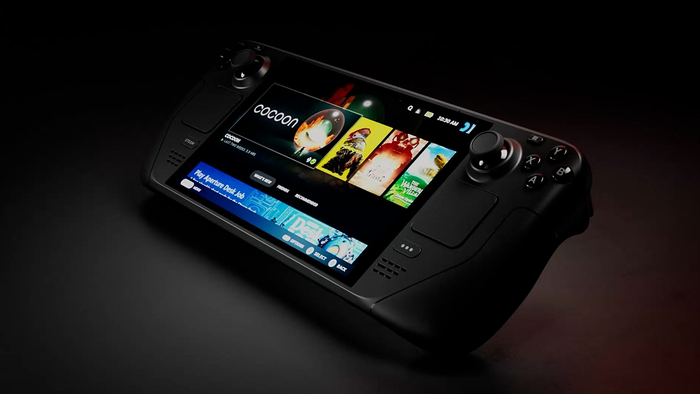Gamasutra analyst Matt Matthews takes an in-depth look at Nintendo's digital transition, and why the company has been slow to take up the shift to digital.

Earlier this week, I took a closer look at the digital transition that the big four Western publishers are undertaking, and today I want to add one of the big platform holders to the picture: Nintendo. In its latest quarterly results, the company reported again the digital revenue across its four digital platforms: the Nintendo DSi and 3DS handhelds and the Nintendo Wii and Wii U consoles. This the is the second time it's reported these figures in detail, but since at least January it has been showing graphs of its digital revenue going back through the launch of the Wii. For example, the latest graph that it showed was this one from April 2013, when it reported results for the fiscal year that ended in March.  So we have sources of official information: digital revenue data reported in Nintendo's last two quarterly statements and official Nintendo graphs like the one above. Using the image analysis software ImageJ we can put together two important pictures of Nintendo's digital business over the past six years. This first picture, just below, shows Nintendo's annualized (trailing twelve-month) digital revenue rate since September 2007.
So we have sources of official information: digital revenue data reported in Nintendo's last two quarterly statements and official Nintendo graphs like the one above. Using the image analysis software ImageJ we can put together two important pictures of Nintendo's digital business over the past six years. This first picture, just below, shows Nintendo's annualized (trailing twelve-month) digital revenue rate since September 2007.  I believe this is a rather unique graph, in that it shows one company's digital revenue figures over an entire console generation. To date neither Sony nor Microsoft, Nintendo's main competitors in the console business, have ever provided information like this about their digital businesses. Up until late 2008, most of Nintendo's digital business was presumably the Wii Shop Channel on the company's Wii console. Between the Wii's late-2006 launch and September 2007, Nintendo reported around $49 million in digital revenue. At that point, the company had shipped (and probably sold through) approximately 13 million consoles. Then in late 2008 the company added its second digital platform, the Nintendo DSi revision to its line of handheld systems. The Nintendo DSi Shop allowed consumers to begin buying some software for their handhelds digitally. The peak in annualized digital revenue came around March 2010, in the year after the company's Wii and Nintendo DS hardware shipments both peaked. Nintendo's digital revenues at that point were about $129 million per year. Digital revenue began to decline at that point, but turned around with the launch of the Nintendo 3DS in the first calendar quarter of 2011. With Nintendo's third digital platform online, the annualized digital revenue rate bottomed out around $94 million per year and began its climb back up to over $120 million per year just before the launch of the Wii U late last year. That final quarter of 2012 was huge for Nintendo. In that quarter alone the company recorded approximately $74 million in digital revenue, more than twice the revenue for the previous quarter. After the holiday rush, revenues have fallen back to the $57 million range for each of the last two quarters. In the past 12 months Nintendo generated over $225 million in digital revenue on its four platforms. Part of that is surely the introduction of full-priced game downloads on the Wii U, but that's not the full picture. Nintendo has also reported strong digital sales for key Nintendo 3DS games like Fire Emblem Awakening, Luigi's Mansion: Dark Moon, and Animal Crossing: New Leaf.
I believe this is a rather unique graph, in that it shows one company's digital revenue figures over an entire console generation. To date neither Sony nor Microsoft, Nintendo's main competitors in the console business, have ever provided information like this about their digital businesses. Up until late 2008, most of Nintendo's digital business was presumably the Wii Shop Channel on the company's Wii console. Between the Wii's late-2006 launch and September 2007, Nintendo reported around $49 million in digital revenue. At that point, the company had shipped (and probably sold through) approximately 13 million consoles. Then in late 2008 the company added its second digital platform, the Nintendo DSi revision to its line of handheld systems. The Nintendo DSi Shop allowed consumers to begin buying some software for their handhelds digitally. The peak in annualized digital revenue came around March 2010, in the year after the company's Wii and Nintendo DS hardware shipments both peaked. Nintendo's digital revenues at that point were about $129 million per year. Digital revenue began to decline at that point, but turned around with the launch of the Nintendo 3DS in the first calendar quarter of 2011. With Nintendo's third digital platform online, the annualized digital revenue rate bottomed out around $94 million per year and began its climb back up to over $120 million per year just before the launch of the Wii U late last year. That final quarter of 2012 was huge for Nintendo. In that quarter alone the company recorded approximately $74 million in digital revenue, more than twice the revenue for the previous quarter. After the holiday rush, revenues have fallen back to the $57 million range for each of the last two quarters. In the past 12 months Nintendo generated over $225 million in digital revenue on its four platforms. Part of that is surely the introduction of full-priced game downloads on the Wii U, but that's not the full picture. Nintendo has also reported strong digital sales for key Nintendo 3DS games like Fire Emblem Awakening, Luigi's Mansion: Dark Moon, and Animal Crossing: New Leaf.
A shrinking revenue base
Let me show you another view of Nintendo's business that I think demonstrates why the company has seemed slow to take up the shift to digital. How much of Nintendo's total software revenues have been digital for the period shown above? That's shown in the figure below.  Note the vertical scale in that figure: it goes only up to 10 percent. From the launch of the Wii through the end of 2009, the company's digital revenue never accounted for more than 2 percent of their software revenue. So even if that revenue were pure profit, it simply wasn't big enough relative to everything else to attract much attention within the company. However, it is clear that the launch of the Nintendo DSi gradually pushed revenues up and then the 3DS pushed revenue up again. That's clearly part of the picture here. But perhaps just as important is that Nintendo's software revenue base has collapsed in the past five years. In calendar 2008, the company earned ¥700 billion in software revenue. In the 12 months prior to June 2013, that revenue had fallen to a mere ¥242 billion, a decline of 65 percent from the peak. So Nintendo's digital revenue has been increasing, yes. But it is just as important to realize that it's a growing part of a shrinking revenue base, and that explains why it has grown to 9.2 percent of the company's software business in the past year.
Note the vertical scale in that figure: it goes only up to 10 percent. From the launch of the Wii through the end of 2009, the company's digital revenue never accounted for more than 2 percent of their software revenue. So even if that revenue were pure profit, it simply wasn't big enough relative to everything else to attract much attention within the company. However, it is clear that the launch of the Nintendo DSi gradually pushed revenues up and then the 3DS pushed revenue up again. That's clearly part of the picture here. But perhaps just as important is that Nintendo's software revenue base has collapsed in the past five years. In calendar 2008, the company earned ¥700 billion in software revenue. In the 12 months prior to June 2013, that revenue had fallen to a mere ¥242 billion, a decline of 65 percent from the peak. So Nintendo's digital revenue has been increasing, yes. But it is just as important to realize that it's a growing part of a shrinking revenue base, and that explains why it has grown to 9.2 percent of the company's software business in the past year.
Sizing up with third parties
Finally, I want to remind you of the scale of digital revenues companies in this industry are generating. In the last 12 months, Nintendo generated $225 million from digital software sales. That is slightly higher than Ubisoft's $201 million but far below Take-Two's $301 million. Compared to EA's $1.7 billion in digital revenue, or Activision Blizzard's $1.6 billion, Nintendo's digital business is still quite small. These aren't apples-to-apples comparisons, because I don't believe Nintendo is reporting digital software sales of only its own titles. Rather, Nintendo's revenue figure is a combination of its own digital software sales and third-party digital software sales made through the company's four platforms. Despite this, I think it does show that Nintendo's digital business is really just beginning to grow to a respectable size. And this isn't by any means a full picture of the digital marketplace. Just to pick one recent example, Puzzle & Dragons reportedly made nearly $5 million per day between April and June of this year on iOS and Android devices. That would put its single quarter revenue at twice Nintendo's annualized rate. Clearly Nintendo's digital business is growing, and the company has made tremendous progress in the past year alone. Among the bad headlines, Nintendo needs to be touting its digital business as one place it is succeeding. (Sony and Microsoft: If you'd like to discuss your digital revenue, now is as good a time as any. It's kind of disappointing that Nintendo, a late bloomer in the digital business, would have so much to contribute to this otherwise opaque part of the industry.)
About the Author(s)
You May Also Like









